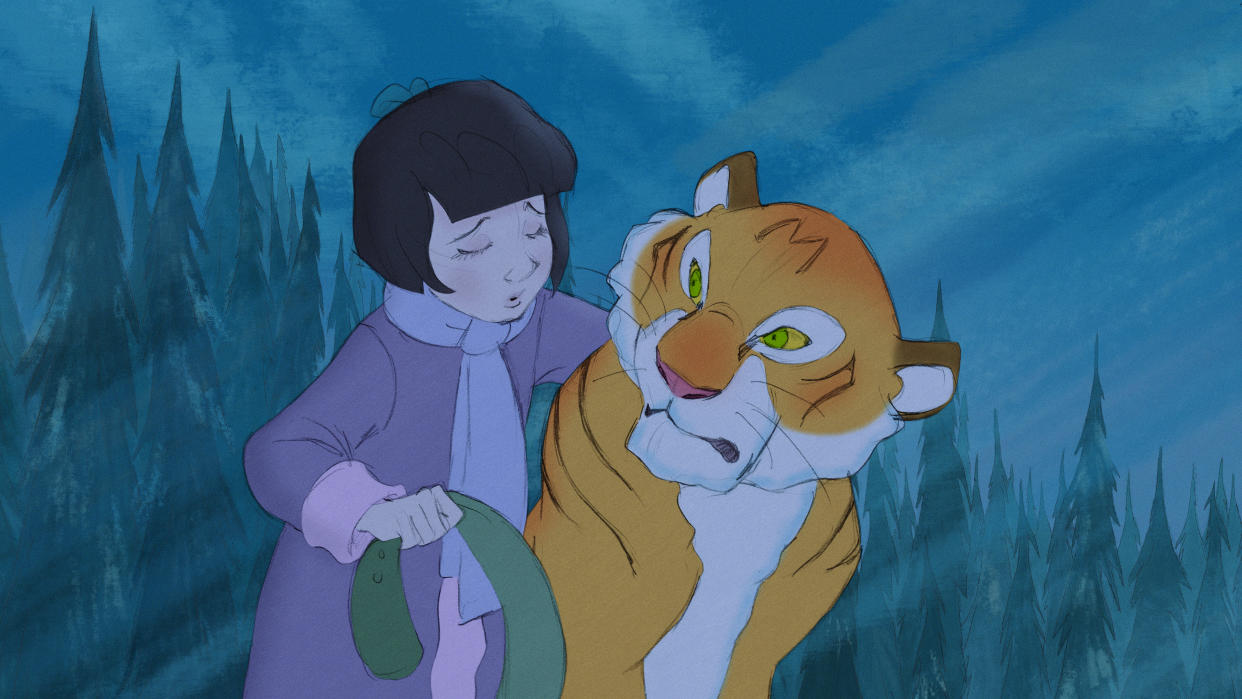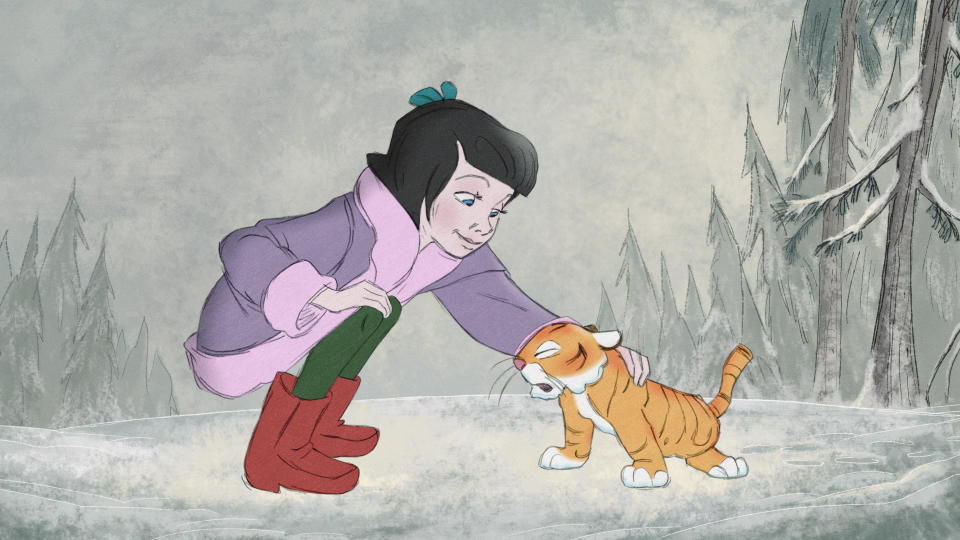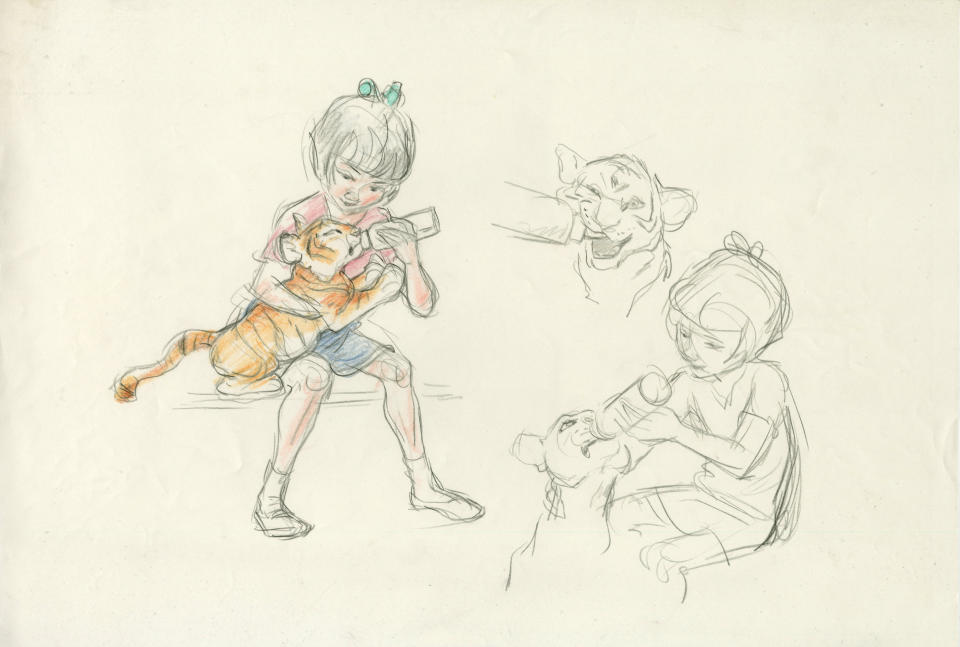The Disney Legend Behind Gaston and Jafar Turned to ‘The Jungle Book’ for His First Animated Short

When Disney 2D animation legend Andreas Deja left the studio in 2013 after three decades — he’s best known for supervising such iconic ’90s villains as Gaston from “Beauty and the Beast,” Jafar from “Aladdin,” and Scar from “The Lion King” — he wanted to direct. Thus began a seven-year passion project to make his first short, “Mushka” (a Russian term of endearment for “sweetheart”), about a young girl who rescues the titular tiger cub in the forest and raises him.
Deja’s goal was to channel the look of the Disney films from the ’60s that he grew up with in Germany, particularly “The Jungle Book” — the first he experienced and his favorite — which made him want to become an animator.
More from IndieWire
'Total Trust' Review: A Chilling Reminder About the Perils of Big Data
Elijah Wood and Other Actors Were Duped Into Making Russian-Propaganda Videos on Cameo
Deja started thinking about returning to his first love — drawing animals — and the friendly dynamic between the innocent girl and the powerful tiger. It turned out to be a fitting reversal of “The Jungle Book” (where the feral boy is raised by panther Bagheera and protected from tiger Shere Khan). He approached screenwriting friend Michael McKinney to flesh out the story and gathered a small but dedicated team in his home studio. After a one-week theatrical run, the short has qualified for Oscar consideration.
“There’s this big full circle for me making this movie,” Deja told IndieWire. “It goes back to ‘The Jungle Book’ and choosing a tiger. That has to do with music, too, because most of the songs were by the Sherman Brothers [Robert and Richard]. And so those songs were engraved in my head as a kid. And the idea that [95-year-old] Richard Sherman would actually offer to write an end credits song [‘Mushka’s Lullabye,’ sung by Holly Sedillos] is outrageous.”

“Mushka” comes on the heels of Deja’s definitive making-of book, “Walt Disney’s The Jungle Book: Making a Masterpiece” (Walt Disney Family Museum), which was released last year. The experience further prepared him for his short with a better understanding of how the Disney team approached animals and nature.
The 28-minute “Mushka” concerns Sarah, who’s forced to leave Soviet-era Kyiv after her grandmother suffers a fall to live with her father in Siberia. Unhappy and disobedient, she wanders into a nearby forest and happens on a tiger and her cub. After the tiger is hunted down and killed, she decides to raise the cub. But when Mushka reaches adulthood and becomes an apex predator, their happy domestic life is threatened by hunters, and Sarah must decide how best to protect him.
Deja decided to move away from the polished cel-painted look of his Disney work to reveal more of the hand of the artist with sharp outlines and other distinguishing line work. This was the hallmark of “101 Dalmatians, “The Sword in the Stone,” and, of course, Walt’s final film, “The Jungle Book.”
“But I wanted to distinguish myself from the CG world as much as I could,” added Deja. “Therefore, ending with a loose, sketchy style for the animation, but also for the background. To say to an audience: ‘Look, drawings can still do that.’ But you look at the series of drawings and they become personalities and they can tell your stories that you believe in — it’s still doable.”
In experimenting with “Mushka” as a return to the style that inspired him professionally, Deja got to lean more into the vibrancy of the line along with an unfinished quality. To help achieve this last part, he refrained from cleanup animation. Instead, he relied on background artist Natalie Franscioni-Karp to paint most of the backgrounds. He wanted to keep a rough quality that was perfect for the Siberian setting. This carried over into Sarah and Mushka (a Siberian tiger with dark black lines) as well.
“I’m just a huge fan of big cats,” Deja said. “I think they’re the most majestic animal. They have a mixture of power and grace, and that is fascinating to me. People ask me if it was a nightmare to add all those stripes and I tell them there aren’t that many on Mushka, just enough to define the form. But that’s the beauty of it, that you can show the perspective changes.

“I rely on the range that real tigers have,” he added. “They can be mad, they can be bored. The first scene I animated of adult Mushka is where he’s being yelled at by Sarah and she had just taken off his collar. And he doesn’t go. He licks her hand, he puts his paw on her shoulder, and then she yells at him: ‘I said, go now, go away!’ And he has never heard her yell. So I knew exactly what that might feel like as a human to be rejected, but also how an animal would just have this bland look. And I knew how to play it. And so that’s why I started there. So we get inside this tiger’s head with that scene.”
The short is dedicated to animation legend Eric Larson, one of the original “Nine Old Men” and Deja’s mentor, who brought him into the Disney training program in 1980 (where he shared a cubicle with Tim Burton on “The Black Cauldron”). “I reached out to Eric when I was still an art student in Germany, and I had heard that he was the head of the training program,” said Deja. “I sent him some samples of my life drawings and animal drawings. He was very encouraging and had the confidence in me, which, otherwise, I wouldn’t have. Clarity was his big thing.”
In pondering the state of the animation industry and some of the recent box office struggles, Deja is naturally rooting for a return to 2D. “Some of the recent CG films have not been doing well, so it’s not a guarantee,” he said. “So maybe audiences are ready for a change or they look back at something that was part of their youth. It’s still possible, it’s doable. But sometimes I think it would have to maybe come from a different country.”
As far as Disney’s 100 anniversary and paying tribute to its 2D legacy, Deja liked the hybrid short, “Once Upon a Studio.” “I thought that the 2D animation in ‘Once Upon a Studio’ looks nice,” he said. “It is well done. As far as I know, there were a few young animators taking a crack at classic Disney characters. And they did a great job. I haven’t seen ‘Wish’ yet, but from the trailer I can tell that there was an aim at a stylistic change as far as the [watercolor] backgrounds. I do applaud any innovative look that gets away from hyper CG reality.”
Best of IndieWire
Where to Watch This Week's New Movies, Including 'Poor Things' and 'The Boy and the Heron'
Quentin Tarantino's Favorite Movies: 59 Films the Director Wants You to See
Sign up for Indiewire's Newsletter. For the latest news, follow us on Facebook, Twitter, and Instagram.

